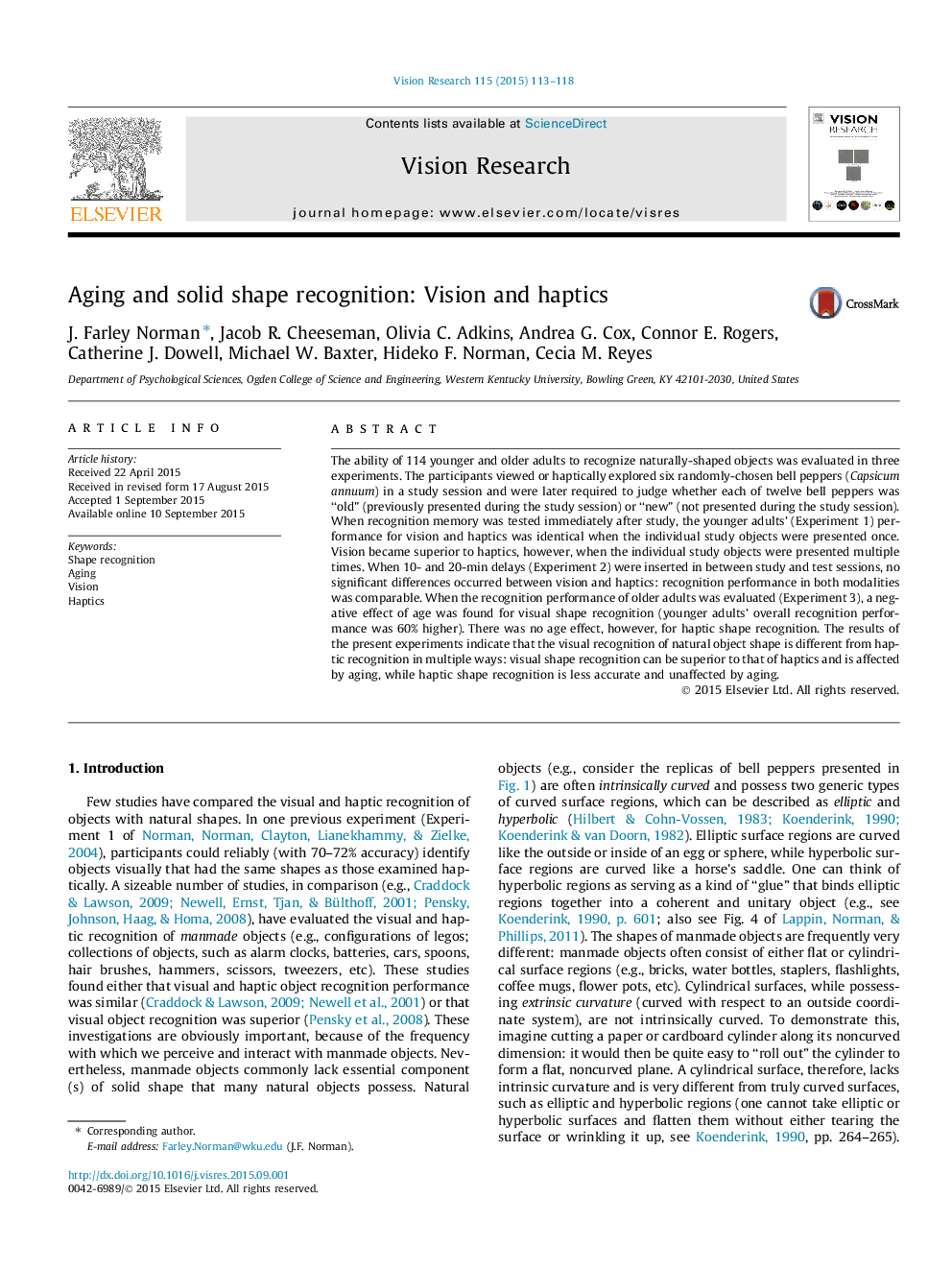| Article ID | Journal | Published Year | Pages | File Type |
|---|---|---|---|---|
| 6203135 | Vision Research | 2015 | 6 Pages |
â¢Visual shape recognition is equal or superior to haptic recognition.â¢Visual shape recognition ability was adversely affected by increases in age.â¢Haptic shape recognition ability was unaffected by age.
The ability of 114 younger and older adults to recognize naturally-shaped objects was evaluated in three experiments. The participants viewed or haptically explored six randomly-chosen bell peppers (Capsicum annuum) in a study session and were later required to judge whether each of twelve bell peppers was “old” (previously presented during the study session) or “new” (not presented during the study session). When recognition memory was tested immediately after study, the younger adults' (Experiment 1) performance for vision and haptics was identical when the individual study objects were presented once. Vision became superior to haptics, however, when the individual study objects were presented multiple times. When 10- and 20-min delays (Experiment 2) were inserted in between study and test sessions, no significant differences occurred between vision and haptics: recognition performance in both modalities was comparable. When the recognition performance of older adults was evaluated (Experiment 3), a negative effect of age was found for visual shape recognition (younger adults' overall recognition performance was 60% higher). There was no age effect, however, for haptic shape recognition. The results of the present experiments indicate that the visual recognition of natural object shape is different from haptic recognition in multiple ways: visual shape recognition can be superior to that of haptics and is affected by aging, while haptic shape recognition is less accurate and unaffected by aging.
